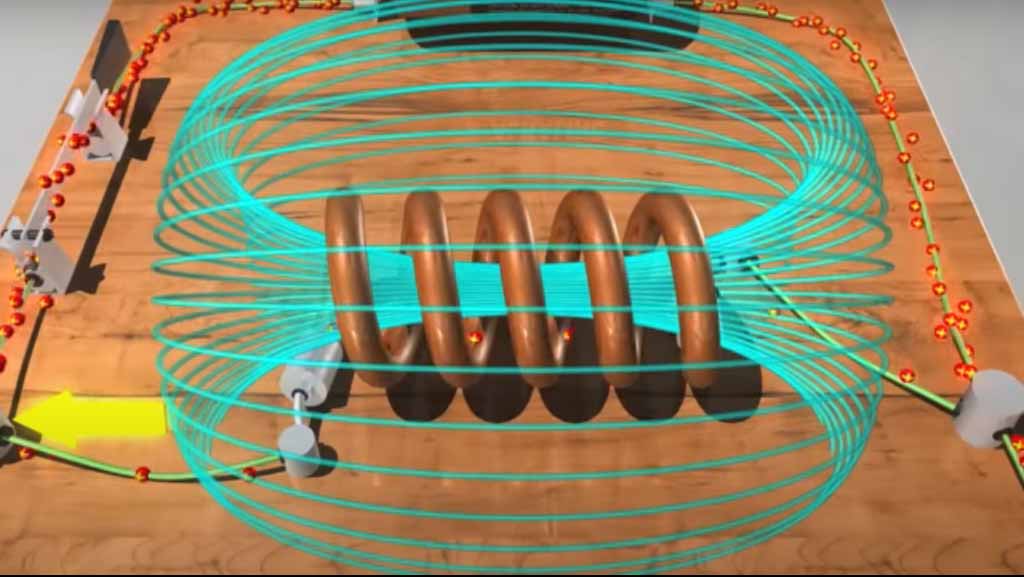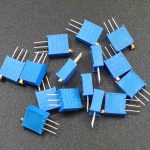Electromotive force, abbreviation E or emf, energy per unit electric charge that is imparted by an energy source, such as an electric generator or a battery. Energy is converted from one form to another in the generator or battery as the device does work on the electric charge being transferred within itself. One terminal of the device becomes positively charged, the other becomes negatively charged. The work done on a unit of electric charge, or the energy thereby gained per unit electric charge, is the electromotive force. Electromotive force is the characteristic of any energy source capable of driving electric charge around a circuit. It is abbreviated E in the international metric system but also, popularly, as emf.
Despite its name, electromotive force is not actually a force. It is commonly measured in units of volts, equivalent in the metre–kilogram–second system to one joule per coulomb of electric charge. In the electrostatic units of the centimetre–gram–second system, the unit of electromotive force is the statvolt, or one erg per electrostatic unit of charge.
Electric charge
Electric charge, basic property of matter carried by some elementary particles that governs how the particles are affected by an electric or magnetic field. Electric charge, which can be positive or negative, occurs in discrete natural units and is neither created nor destroyed.
Electric charges are of two general types: positive and negative. Two objects that have an excess of one type of charge exert a force of repulsion on each other when relatively close together. Two objects that have excess opposite charges, one positively charged and the other negatively charged, attract each other when relatively near.
Many fundamental, or subatomic, particles of matter have the property of electric charge. For example, electrons have negative charge and protons have positive charge, but neutrons have zero charge. The negative charge of each electron is found by experiment to have the same magnitude, which is also equal to that of the positive charge of each proton. Charge thus exists in natural units equal to the charge of an electron or a proton, a fundamental physical constant. A direct and convincing measurement of an electron’s charge, as a natural unit of electric charge, was first made (1909) in the Millikan oil-drop experiment. Atoms of matter are electrically neutral because their nuclei contain the same number of protons as there are electrons surrounding the nuclei. Electric current and charged objects involve the separation of some of the negative charge of neutral atoms. Current in metal wires consists of a drift of electrons of which one or two from each atom are more loosely bound than the rest. Some of the atoms in the surface layer of a glass rod positively charged by rubbing it with a silk cloth have lost electrons, leaving a net positive charge because of the unneutralized protons of their nuclei. A negatively charged object has an excess of electrons on its surface.

Millikan oil-drop experimentBetween 1909 and 1910 the American physicist Robert Millikan conducted a series of oil-drop experiments. By comparing applied electric force with changes in the motion of the oil drops, he was able to determine the electric charge on each drop. He found that all of the drops had charges that were simple multiples of a single number, the fundamental charge of the electron.
Electric charge is conserved: in any isolated system, in any chemical or nuclear reaction, the net electric charge is constant. The algebraic sum of the fundamental charges remains the same.
The unit of electric charge in the metre–kilogram–second and SI systems is the coulomb and is defined as the amount of electric charge that flows through a cross section of a conductor in an electric circuit during each second when the current has a value of one ampere. One coulomb consists of 6.24 × 1018 natural units of electric charge, such as individual electrons or protons. From the definition of the ampere, the electron itself has a negative charge of 1.602176634 × 10−19 coulomb.
An electrochemical unit of charge, the faraday, is useful in describing electrolysis reactions, such as in metallic electroplating. One faraday equals 96485.332123 coulombs, the charge of a mole of electrons (that is, an Avogadro’s number, 6.02214076 × 1023, of electrons).



Comments are closed